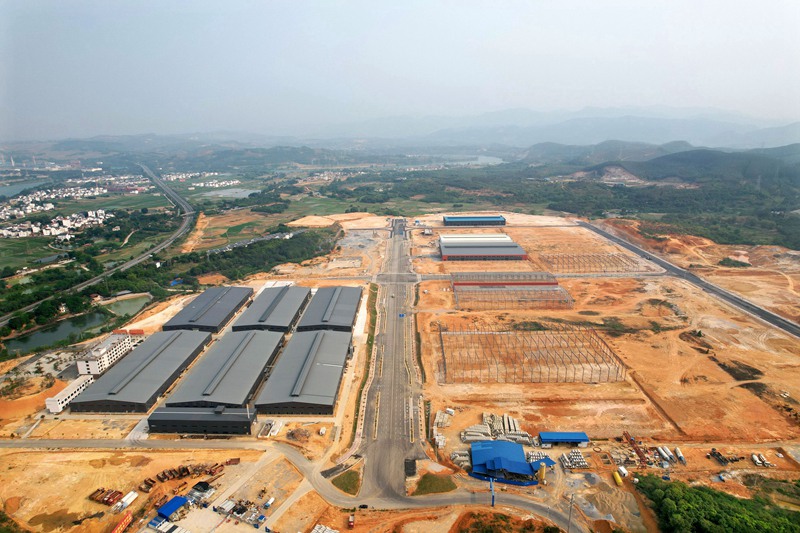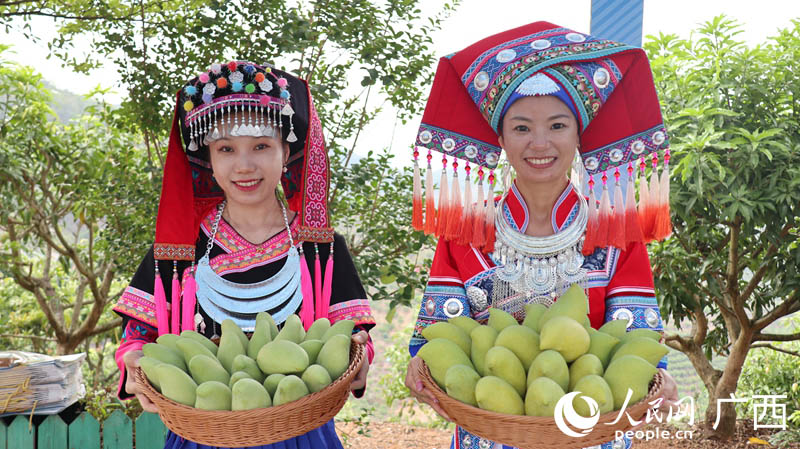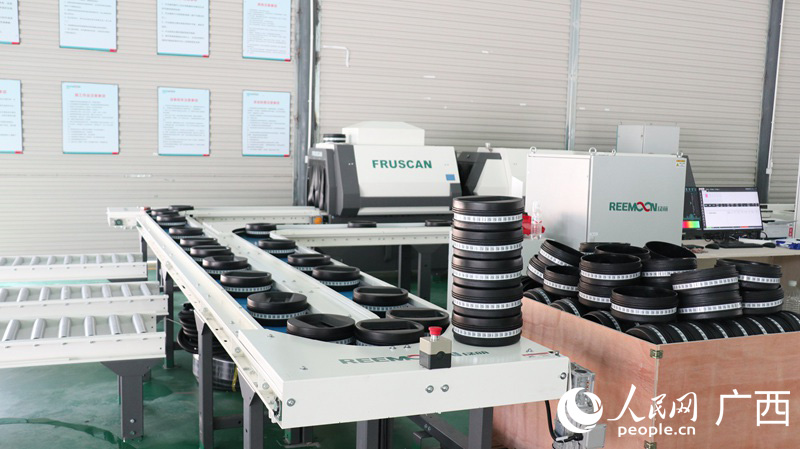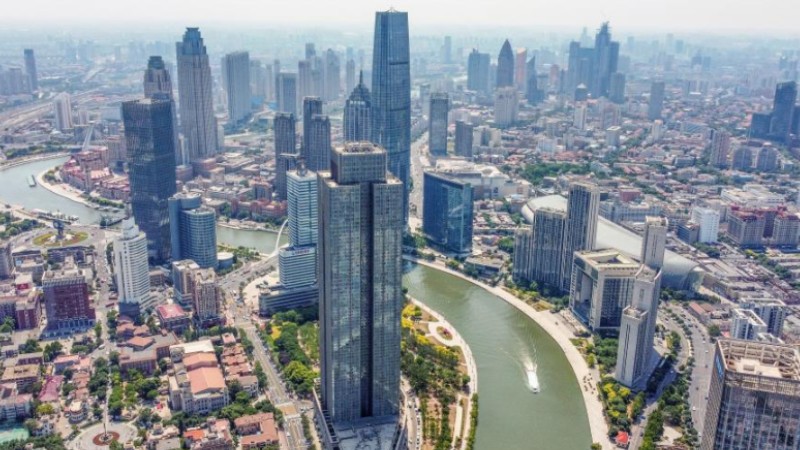Baise in S China's Guangxi vigorously develops industries
Baise city in south China's Guangxi Autonomous Region boasts abundant forestry resources and is an important timber producing area in south China. It ranks first in Guangxi in terms of forest area, stock volume, area of ecological public-welfare forests, and the area and number of nature reserves. One out of every 17 cubic meters of timber produced in the country comes from Baise.

Aerial photo shows a forestry industrial park in Baise city, south China's Guangxi Zhuang Autonomous Region. (Photo courtesy of the publicity department of the Party committee in Youjiang district)
The city has launched a project to pursue high-quality development of the forestry industry. A modern forestry industrial park, with a total investment of 10.6 billion yuan ($1.48 billion) covering 6,668 mu (444.53 hectares), is under construction.
Youjiang district in Baise city, where the project is located, has been vigorously trying to attract businesses.
"The district has plenty of raw materials and boasts convenient water and land transport. The local government offers favorable policies and built transport infrastructure inside the industrial park. My company has three factories at the industrial park, which altogether can achieve a monthly output of around 35 million yuan," said Zhu Hezhi, general manager of a wood industry company.

An employee works inside a factory of a wood industry company in Baise city, south China's Guangxi Zhuang Autonomous Region. (Photo/Liang Zhuohao)
“Thirty-five companies have settled in the industrial park. After it is put into operation, the industrial park will see an annual output of 15 billion yuan," said Zhu.
Baise city is the largest mango producing region in China, with the total planting area of the fruit currently approaching 1.4 million mu, with over 30 mango varieties being cultivated in the city. This year, an estimated 1.25 million tonnes of mangoes will be harvested in the city.

Two women show newly picked mangoes in Baise city, south China's Guangxi Zhuang Autonomous Region. (People's Daily Online/Huang Zijing)
In early June, a digital sorting line started operations in an e-commerce industrial park in Youjiang district.

A digital fruit sorting line in an e-commerce industrial park in Youjiang district, Baise city, south China's Guangxi Zhuang Autonomous Region. (People's Daily Online/Huang Zijing)
"The fruits sorted by workers can easily be of uneven quality, and even a skilled worker can sort only between 100 and 150 kg of mangoes in an hour. The digital sorting line can sort about 2,500 kg of mangoes in an hour," said Huang Ming, head of a digital fruit sorting center in Baise city.
In recent years, Youjiang district has vigorously developed agriculture.

A vegetable industry demonstration base in Longchuan township, Youjiang district, Baise city, south China's Guangxi Zhuang Autonomous Region. (People's Daily Online/Huang Zijing)
At a vegetable industry demonstration base in Longchuan township of Youjiang district, workers were busy picking vegetables.
"With the vegetable planting area expected to reach about 8,000 mu, the demonstration base strives to become a provider of vegetables for Shenzhen in south China's Guangdong Province and the Guangdong-Hong Kong-Macao Greater Bay Area," said Zhang Chao, Party chief of Longchuan township.
The demonstration base is mainly located in four local villages, and is able to provide employment for local villagers.

Workers pick vegetables at a vegetable industry demonstration base in Longchuan township, Youjiang district, Baise city, south China's Guangxi Zhuang Autonomous Region. (People's Daily Online/Huang Zijing)
Photos
Related Stories
- China's Guangxi sees foreign trade surge 53.2 pct in Jan-May
- Flowers of dendrobium catenatum come in bloom in SW China's Guangxi
- Pic story of langur protecter in Fusui, SW China
- Pic story: conservator at Shankou Mangrove Nature Reserve in Hepu County, S China
- Hepu in S China's Guangxi moves to protect mangrove forests
- Red pepper harvest adds flavor to life in S China's Guangxi
Copyright © 2023 People's Daily Online. All Rights Reserved.









